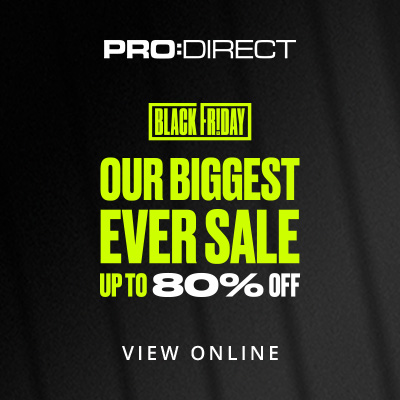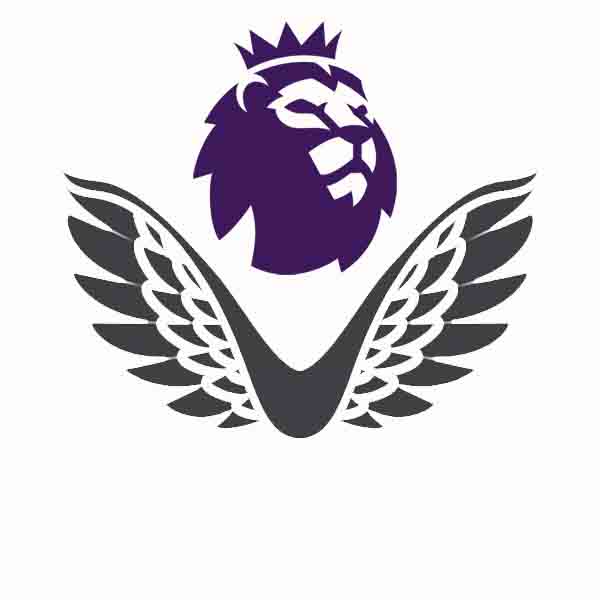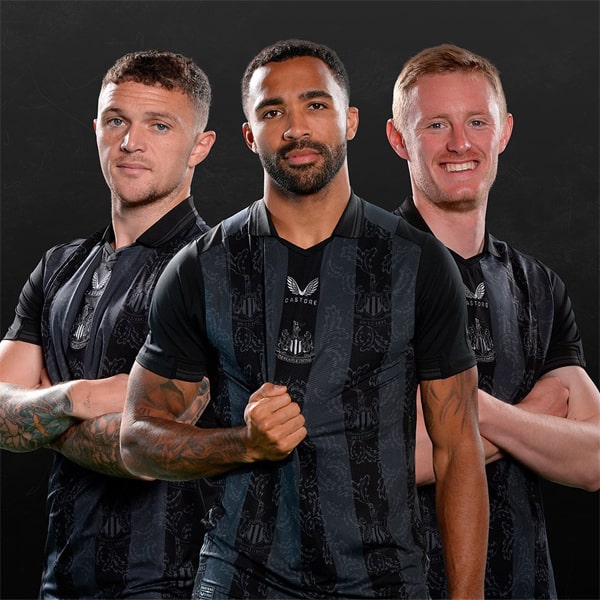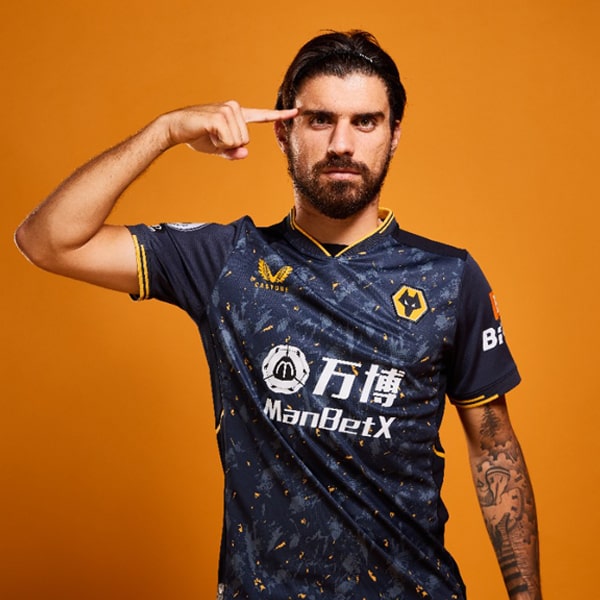For years the football kit scene has been dominated by the big three of Nike, adidas and PUMA, the smaller brands left to scrap over the remaining teams, with their very survival in the game hanging in the balance. But now there’s a new player in town, disrupting the status quo with their new approach: say hello to Castore.
Three years ago, football fans would’ve been forgiven for not having a clue who or what Castore was. Only founded in 2015 by Liverpudlian brothers Phil and Tom Beahon, the brand was best known initially for their affiliation with tennis and specifically Andy Murray, who became a shareholder in January 2019. That was followed by a move into cricket, with the West Indies signing a three-year deal with them to produce their official kit. But the emerging force was certainly not satisfied there, and had ambitions far beyond what they had achieved at this point.
Flash forward another two years and Castore are now the official apparel partner of the Lawn Tennis Association, and their influence spreads across an ever-increasing number of sports. They currently boast kit supply deals with Australian rugby league clubs Sydney Roosters and Melbourne Storm as well as Australian rules football club West Coast Eagles; English Rugby Union side Saracens and their captain, Owen Farrell, and Saracens Mavericks Netball team are also on the roster, and the brand is official team apparel and sportswear partner to the McLaren Formula One team. Then there’s a huge deal with United States Golfer, Patrick Reed, renowned for playing the field with his apparel choices since the end of 2020. And most recently, in September the brand announced a 10 year deal with England Cricket, seeing them become the Official Kit Supplier from the start of the 2022 season.
And all of that is without mentioning the football world, in which they currently have deals with Rangers, Wolves and Newcastle, not to mention links with numerous other clubs across Europe, including Aston Villa, Sevilla and Lazio. To say it’s been a meteoric rise is something of an understatement.
A quick bit of history then. Tom, the older of the two brothers, had played professional football for Tranmere Rovers between the ages of 17 and 21 before spending time at Spanish side Jerez. Phil on the other hand played semi-professional cricket for Cheshire and Lancashire. This was all put aside though when they both realised that they were never going to make it at the very pinnacle of their chosen disciplines. Instead they opted for a new venture: setting up a sportswear business.
Pilgrimages to mills in Italy and Switzerland, and factories in Portugal gave them the base knowledge they needed, and following a move to London, with plenty more graft in the financial sector, they were ready to launch online in 2016. That’s obviously a brief version of what was a period of dedication and hard work for the brothers Beahon. But now that work is paying off and then some.
From a footballing perspective, it seems that any time a top-tier team is nearing the end of a kit sponsorship deal, Castore’s name is never far away from the list of potential replacements. The brand was quick to follow up their initial move into the game with Rangers back in July 2020 by signing long-term deals with Premier League sides Wolves and Newcastle, signalling their intent. A look at the results of these deals shows all three clubs with sets of completely bespoke kits, including a special edition 150th anniversary kit for Rangers more recently. This is the kind of treatment that the bigger brands only reserve for the top-tier teams, but that Castore are confident they can provide across the board
But despite their rapid progress, these are still early days for the burgeoning brand, and they have designs to expand into the European football market. Links with Roma and Napoli didn’t come to fruition, however the rumour mill continues to link their name with the likes of Lazio, Sevilla and Bayer Leverkusen. While nothing official has been announced yet, the talk surrounding the latter two teams seem to have more weight behind them; these would be moves that would see Castore entering the La Liga and Bundesliga markets for the first time in what would be a further mark of intent. And don’t expect the links with Italian teams to go away anytime soon either – it’s clear that the brand want to expand into different territories as a matter of priority, and they're aggressively pursuing these avenues.
For Sevilla, it will mean an end to their association with Nike, with whom they have enjoyed record sales over the last few seasons, while Bayer Leverkusen would make the switch from German brand Jako. It would be a big move for Leverkusen, given that they’ve only had two different kit makers in their history, both being German (adidas from 1977 to 2016, and Jako from 2017 to present). Both moves, should they come to pass, would be a huge sign of faith in Castore.
So where does this faith come from, and just how have Castore been able to establish themselves so quickly? There’s a number of reasons, but key among them are the brand’s ability to offer rapid turnaround of product, the ability to offer bespoke product unlike anything else on the market, and a new commercial deal that uses an incentivised growth model that benefits both parties. With clubs ready and willing to make the switch, whatever the finer details on offer are, the overall package is clearly appealing.
Big brands work in the way they do because they can reduce costs by mass-producing jerseys, earning higher margins by manufacturing them in cheaper regions.They take huge bets 12 months before the start of the season on how much stock they think they can sell, so when a team underperforms, or for that matter overperforms, brands don't have the right amount of stock, or the ability in the supply chain to order smaller quantities for a restock, something that Castore can do.
Castore’s agreements use an incentivised growth model that benefits both parties should more shirts be sold. It would see both parties sharing the benefits of the growth through an ascending royalty rate, so as agreed revenue targets are hit the club receives a higher royalty percentage. It’s a potentially revolutionary way of doing business.
Newcastle’s recent takeover and expected rise could well be a bonus for Castore, having only recently sealed a long term deal with the Geordies. It could prove to be another way to further catapult the brand into the footballing stratosphere... Meanwhile, Aston Villa look likely to be the next Premier League side to sign with them when their deal with Kappa expires, which would bring Castore’s total number of teams in the league to three – which would – dependent on relegations and promotions – be the joint second highest brand alongside Umbro in terms of representation, behind Nike and adidas (both currently with four teams each). That in itself would be a huge marker for a company that only emerged five years ago.
Castore products are now sold in more than 50 countries, and they pride themselves on “utilising advanced engineering and unique technical fabrics to create the highest quality sportswear in the world for athletes who demand the very best”. While 99 percent of their revenue is online, they have recently opened a physical retail store on London's famed King's Road in Chelsea, a retail centre home to some of the world’s most prestigious brands and yet another marker of their startling progress. The 1,200 sq ft space carries the brand’s full range of gym, running, tennis and golf wear, as well as a lounge with a golf simulator. The influence and reach of the brand is right there for all to see, stretching across numerous sporting disciplines and backed by some of the best athletes in the world.
While Nike, adidas and PUMA continue to dominate the football kit scene across the globe, the thirst for a fresh, bespoke approach makes now the perfect time for a new brand to emerge and disrupt the existing regime. It’s time to embrace the change – Castore are here to stay.














